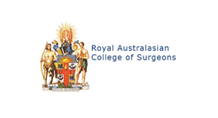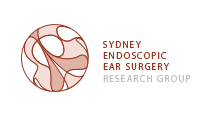Acoustic Tumours
What Are Acoustic Tumours / Neuroma or Vestibular Schwannoma Tumours?
These benign fibrous growths arise from the main balance nerve or the main auditory nerve. They are not known to metastasize (ie. spread) to other parts of the body, and represent between 6% and 10% of all brain tumours.
Acoustic Tumours /neuromas are located deep within the skull, close to many vital brain regions. In many cases, the first symptoms of acoustic neuroma are auditory disturbances, including ear noise, hearing disturbance or balance disturbance. With continued growth, the tumours may interfere with other, more vital bodily functions. Headaches are a common symptom, due to increased intracranial pressure, and the pressure can eventually be fatal if the tumours remain untreated.
Acoustic Tumours /neuromas usually develop slowly, over a period of years. However a small proportion can grow more rapidly. The symptom severity and presentation also varies widely, depending on the growth rate and the actual positioning of the tumours.
Although these growths are not malignant, they can be fatal. Therefore we use a range of diagnostic procedures to ensure your diagnosis is accurate and treatment planning is as effective as possible. We aim to preserve life first and foremost in this potentially lethal condition, and next aim to preserve as much ordinary function as possible. If treated in time, many acoustic neuroma patients can live a normal life post-treatment, However, in some cases an unavoidable degree of handicap persists.
Treatment Options include:
- Observing with regular MRI every 6-12 months until the tumour is >15mm in size
- Stereotactic (robotic assisted) radiation therapy to slow or stop the growth of tumours. Usually reserved for tumours >15mm where surgery is contra indicated (eg. older age) or as a patient preference.
- Microsurgery to remove the tumour. Usually reserved for tumours >15 mm where the patient wishes to completely remove the lesion.
In order to preserve as much function as possible, at Sydney Hill ENT Clinic acoustic neuroma treatment is carried out by a team consisting of a neuro-otologist (A/Prof Nirmal Patel), a neurosurgeon, a neurosurgical anaesthetist and a neurosurgical specialist nurse.
Videos relating to acoustic tumours
Dr Michael Biggs & Dr Nirmal Patel remove an acoustic tumour (vestibular schwannoma). Acoustic tumours may be treated with surgery. Microsurgical removal can destroy or attempt to preserve hearing. This was a hearing preserving procedure which successful preserve the patient’s facial nerve function and remaining hearing.
This video is provided for educational use only. For more ear surgery videos head over here.
For more information on Acoustic tumour removal please visit, the Sydney Acoustic Neuroma and Meningioma Institute (SANAMI) at http://www.sanami.com.au
Video by Associate Professor Nirmal Patel.
Common questions answered
Small Tumour
Smaller acoustic neuromas are usually confined within the inner ear canal which runs into the brain. The hearing, balance and facial nerves run through this canal, as well as the blood vessels of the inner ear.Medium Tumour
Acoustic neuromas are classified as ‘medium’ size if they have grown past the end of the bony canal of the inner ear, but is not yet causing any pressure on the brain.Large Tumour
Acoustic neuromas are classified as ‘large’ if they have grown past the end of the bony canal of the inner ear, and have begun to put pressure on brain structures and disturb the brain’s function. Larger tumours carry greater risks in terms of both their affect on your health, and the complications of removal.Three microsurgical options for acoustic neuroma treatment are available. These include translabyrinthine, middle fossa and retrosigmoid approaches. The approach chosen will depend on the size of the tumour and the level of residual hearing you have. In many cases it is not possible to salvage hearing completely, and in most cases there is a degeneration of hearing. However, if the tumour is large, a choice needs to be made between preservation of hearing and preservation of your life.
Translabyrinthine (through the ear) surgery for acoustic neuroma
In translabyrinthine surgery, an incision is made behind your ear to expose the mastoid and inner ear structures. These structures are removed to expose the tumour, which will be completely removed. In rare cases it may not be possible to remove the tumour completely, and partial removal is performed instead. Fat from the abdomen is used to replace the tissue taken from the mastoid.
In the translabyrinthine approach, the hearing and balance mechanisms of the inner ear are sacrificed. That ear will be permanently deafened, and the balance mechanism in the opposite ear will adapt to providing stabilisation by itself in around 1 to 4 months.
Middle fossa (above the ear) surgery for acoustic neuroma
In the middle fossa approach, an incision is made above your ear. The brain is elevated within the skull to expose the tumour. While we will always attempt to preserve hearing while removing the tumour, in 60 to 70% of cases the hearing nerve or the artery leading to the inner ear must be sacrificed in order to ensure the tumour does not return.
Retrosigmoid (behind the ear) surgery for acoustic neuroma
In the retrosigmoid approach, an incision is made behind your ear. The brain is elevated within the skull to expose the tumour, and in most cases the tumour can be completely removed. In some cases it may not be possible to remove the tumour completely, and partial removal is performed instead.
While we will always attempt to preserve hearing while removing the tumour in the retrosigmoid approach, in about 60 TO 70% of cases the hearing nerve or the artery of the inner ear must be sacrificed in order to ensure total tumour removal.
To view a video of Acoustic Neuroma removal performed by SANAMI surgeons Dr Michael Biggs and Dr Nirmal Patel, please visit our youtube page.
Most patients become totally deaf in the operated ear as a result of acoustic neuroma surgery, a necessary complication of preserving life.
Patients may have already developed coping strategies for the hearing deterioration which accompanies acoustic neuroma growth. You may have learned to watch speakers carefully while they are talking, learned to use signs to help you communicate and to interpret others’ signs more effectively, and to do rudimentary lip reading.
Implantation of a Bone Anchored Hearing Implant (BAHA) can also create vast hearing improvement in acoustic neuroma patients. The BAHA is inserted under the skin on the operated side, where it acts to receive and amplify sound, and direct it to the hearing ear.
Some risks are common to all surgical procedures, and will be discussed by your surgeon prior to making the decision to undergo surgery for your acoustic neuromas. The following are complications which are particularly apparent after acoustic neuroma surgery.
Tumour size and complications
The smaller your tumour, the lower your risk of complications in general. As the tumour enlarges, the surgery will often involve more of your anatomical structures and cause greater complications.
Hearing impairment
Hearing impairment is a very common complication of acoustic neuroma removal. Most tumours are classified ‘medium’ or ‘large’, and in most cases it is necessary to remove the hearing nerve or the artery leading to the inner ear along with the tumour. Following surgery, the patient usually retains hearing in only one hear. However, if your tumour is quite small and the hearing nerve can remain intact, your hearing may improve following surgery.
Tinnitus
Tinnitus is usually unimproved following acoustic neuroma surgery, and in about 10% of cases may actually be worsened.
Dry mouth and taste disturbance
A dry mouth and associated abnormalities of taste often persist for a few weeks following surgery, and resolve spontaneously. In around 5% of cases the disturbance may persist longer than a few weeks.
Unsteadiness and balance problems
Acoustic tumours are frequently interconnected with the balance nerve and/or the entire vestibular apparatus (balance mechanism) of the inner ear. In the short term, dizziness is common and may be severe. Around 30% of patients have prolonged unsteadiness upon head movement.
However, the removal of the balance nerve does not always result in worsened balance in the long term. Allowing the single remaining balance nerve on the opposite side to perform all balance functions often leaves people improved over their preoperative unsteadiness. The unsteadiness can return with fatigue, sometimes for several years.
In some patients, long term problems with unsteadiness are made permanent by the tumour removal. If the acoustic neuroma had grown around the blood supply for the cerebellum, removal of the tumour may result in decreased cerebellar function. This can cause problems with arm and leg coordination.
Facial weakness or paralysis
The facial nerve, which controls the muscles of facial expression and blinking, is often affected by removal of acoustic neuromas. Temporary paralysis is very common following acoustic neuroma removal, and is usually due to swelling around the nerve. This usually resolves in a few weeks, but the muscles may feel weak for up to a year afterwards, and residual weakness may remain permanently.
We take all precautions to ensure that the facial nerve is disturbed as little as possible by the acoustic neuroma removal. Operating microscopes are used, and our most experienced surgeons work on acoustic neuroma removal. However, to completely remove the neuroma it may be necessary to stretch the nerve, which usually results in swelling.
In some cases, it may be necessary to cut the facial nerve to completely remove the acoustic tumour. In this case, we attempt to either immediately reconnect the shortened facial nerve, or to use a skin sensation nerve from an upper part of the neck to replace the facial nerve.
If temporary paralysis occurs following acoustic neuroma removal, we follow a facial function observation schedule in the months after the surgery. In about 5% of cases, facial movement may not spontaneously improve. If this occurs, we have the options of either connecting the facial nerve to the hypoglossal nerve (which runs through the neck), or connecting the temporalis muscle (used for chewing) to the muscles of the face to help move them.
Eye function disturbance
When facial paralysis develops, the eye often dries out, leaving it unprotected. We will refer you to an eye specialist if this occurs, who may create a treatment plan including applying artificial tears or taping the eye shut for a period of time. If prolonged paralysis is expected to interfere with eye closing, the eyelid may be sewn shut or a gold weight eyelid closing device inserted. This keeps the delicate tissues of the eye moistened and protected, helps with comfort and also improves appearance.
Head and neck nerve disturbances
Depending on which nerves an acoustic neuroma is in close contact with, a range of abnormalities of function may occur in your head and neck structures. If the eye muscles are affected, double vision may result. If the nerves supplying the mouth and throat are damaged, there may be weakness of voice, difficulty swallowing or numbness of the throat, tongue and face. If other motor nerves are affected, weakness of the shoulder can occur.
Risk of death or brain function complications
Removal of acoustic neuromas by nature holds risks, since the tumours are usually located alongside brain stem centres controlling vital functions such as breathing, heart rate and blood pressure. Enlarged tumours often become intertwined with the blood supply to the brain stem.
With the help of an operating microscope and the benefit of skill, experience and care, we can usually avoid complications. However, in some cases acoustic neuroma removal may disturb blood supply, resulting in loss of muscle control/paralysis or death. Removal of smaller tumours almost never results in death, and removal of large tumours causes death in less than 1% of cases.
Blood transfusion complications
If blood transfusions are required during the acoustic neuroma removal, there may be immediate or late complications. Immediate complications are rare, but viral infections may occasionally develop after some time. The risk can be minimised by removing a unit of autologous blood (the patient’s own) for storage in case a transfusion is needed.
Infections
Around 90% of patients remain infection-free after acoustic neuroma surgery. When infection does occur, it is usually a type of bacterial meningitis (colonisation of the meninges surrounding the brain). If meningitis develops, hospitalisation will be longer than expected and high doses of antibiotics will be used to clear the infection. This treatment has side effects in itself, which can include allergic reactions, gastrointestinal disturbances, suppression of new blood cell formation and occasionally hearing loss in the good ear. These complications are rare, however.
Brain swelling or haemorrhage
Post-operative complications can include bleeding or swelling of the brain the develops after the surgery is complete. A second operation will be necessary immediately to allow the brain room to expand and to stop the bleeding. Paralysis or death is possible for some patients.
Leakage of spinal fluid
If removal of the acoustic neuroma can only be accomplished by cutting into the cerebrospinal fluid cavity, we will close the leak prior to the completion of surgery using fat from the abdomen. However, in some patients the aperture re-opens and another surgery is necessary to stop the leak.
Surgical removal is the standard and necessary treatment for all large acoustic neuromas. Smaller neuromas may be left for some time before removal, with close observation through MRI scanning. However, the earlier that diagnosis and removal occurs, the lower the risk of serious or permanent complications.
Acoustic tumours are a rare cause of unilateral hearing loss, balance disturbance or tinnitus. Even careful checking of patients who may have acoustic neuromas cannot always result in an early diagnosis, unfortunately. Definite diagnosis may not be possible until the tumour is enlarged.
The surgeons at the Sydney Hills ENT Clinic and SANAMI are always happy to discuss your acoustic neuroma concerns and treatment options. Feel free to get in touch with us at any stage.
Other Services
Other Services
Still have a question to two?
Our team will be happy to answer any questions you may have about Acoustic Tumours.







